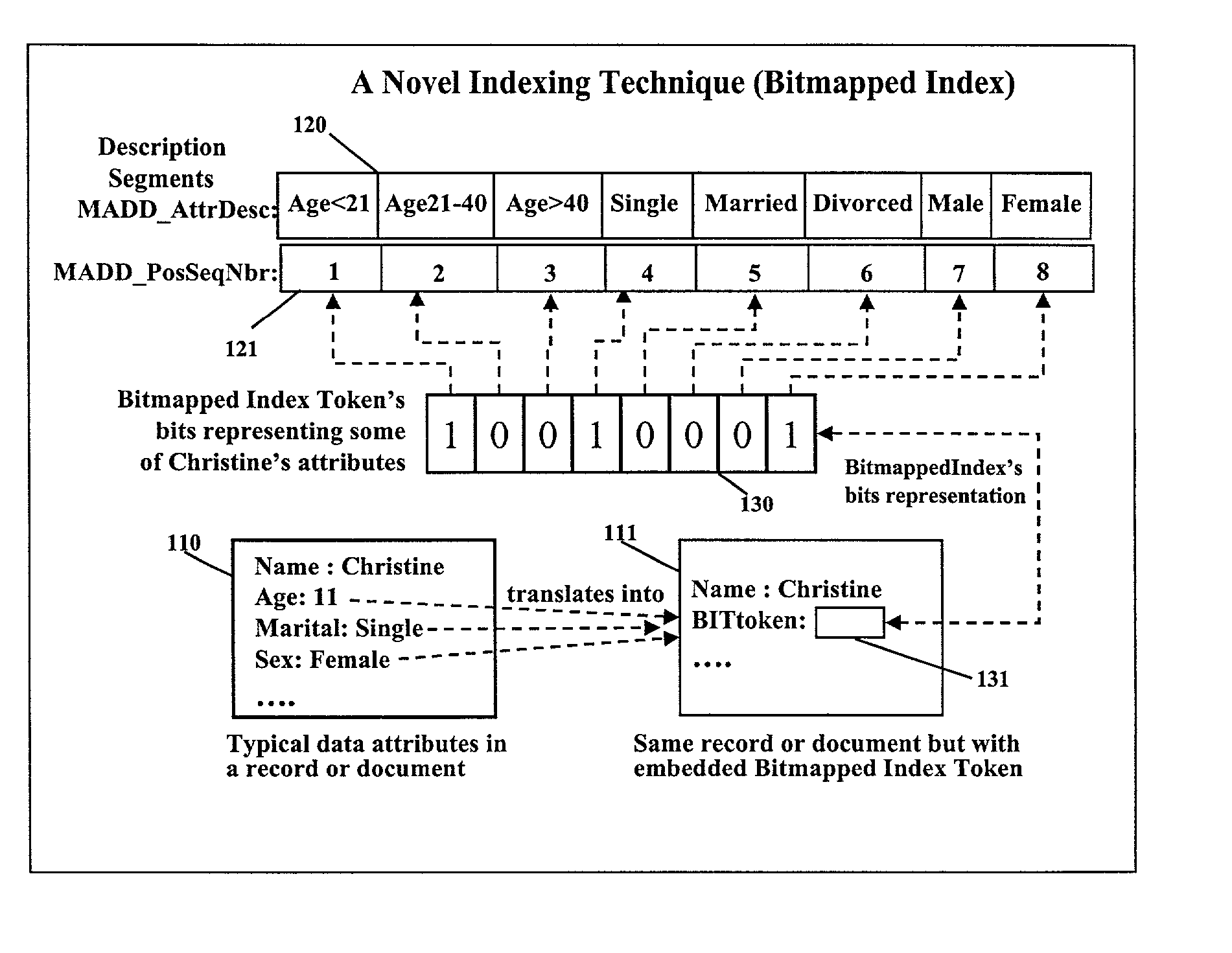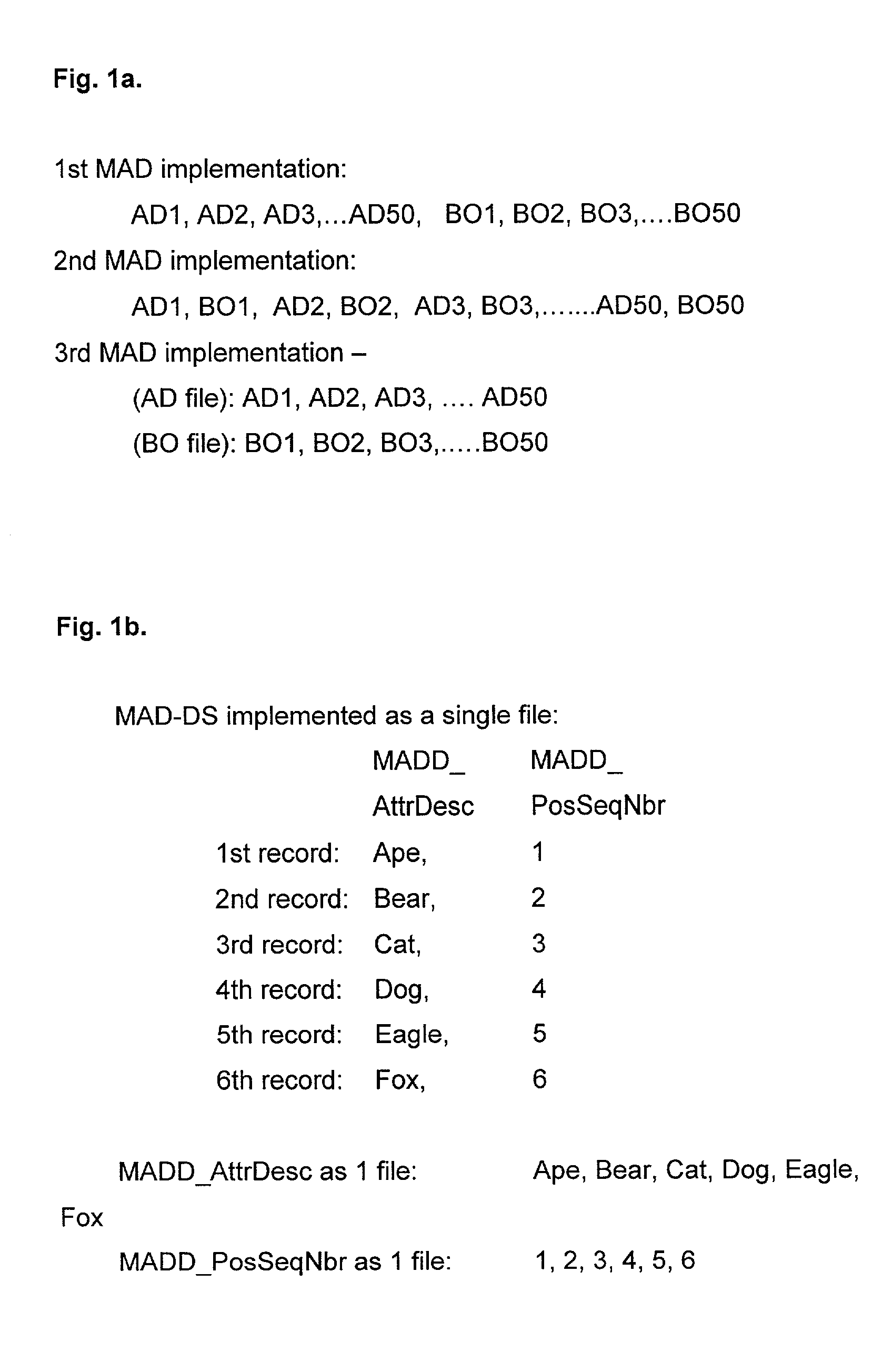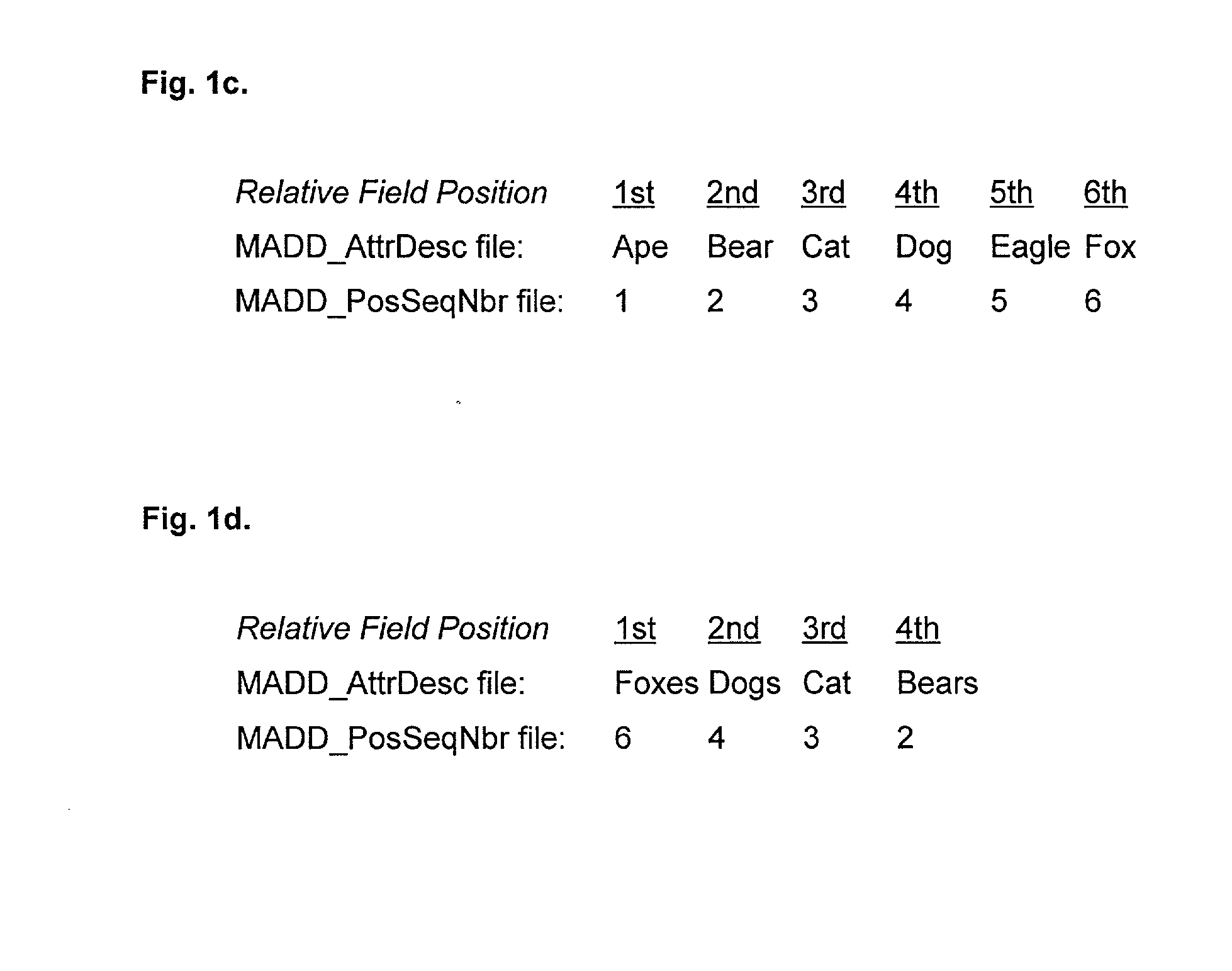System for indexing textual and non-textual files
a textual and non-textual file technology, applied in the field of textual and non-textual file system, can solve the problems of ineffective filing and indexing mechanism, user still using, and difficult use of conventional indexing methods if possibl
- Summary
- Abstract
- Description
- Claims
- Application Information
AI Technical Summary
Problems solved by technology
Method used
Image
Examples
Embodiment Construction
[0034] This section describes the structural aspects of the invention. This invention can be implemented in any device capable of executing programming codes. Some examples, and not limiting its scope, are mainframe computers, `Unix` workstations and servers, PDAs and personal computers. The device can be local or remotely connected on a network. The term, "program application" refers to any device or program in which the methods and principles of this invention, whether in part or in full, are implemented. The term "target file" refers to a computer file or record that can be indexed. The term "indexed target file" refers to a target file that has been indexed by the program application. For simplicity and clarity, when describing the invention's methods and principles hereafter, a personal computer environment running the widely used Microsoft's Windows, and its hierarchical directory structure are used for the purpose of illustration, and it is not intended to limit the applicati...
PUM
 Login to View More
Login to View More Abstract
Description
Claims
Application Information
 Login to View More
Login to View More - R&D
- Intellectual Property
- Life Sciences
- Materials
- Tech Scout
- Unparalleled Data Quality
- Higher Quality Content
- 60% Fewer Hallucinations
Browse by: Latest US Patents, China's latest patents, Technical Efficacy Thesaurus, Application Domain, Technology Topic, Popular Technical Reports.
© 2025 PatSnap. All rights reserved.Legal|Privacy policy|Modern Slavery Act Transparency Statement|Sitemap|About US| Contact US: help@patsnap.com



